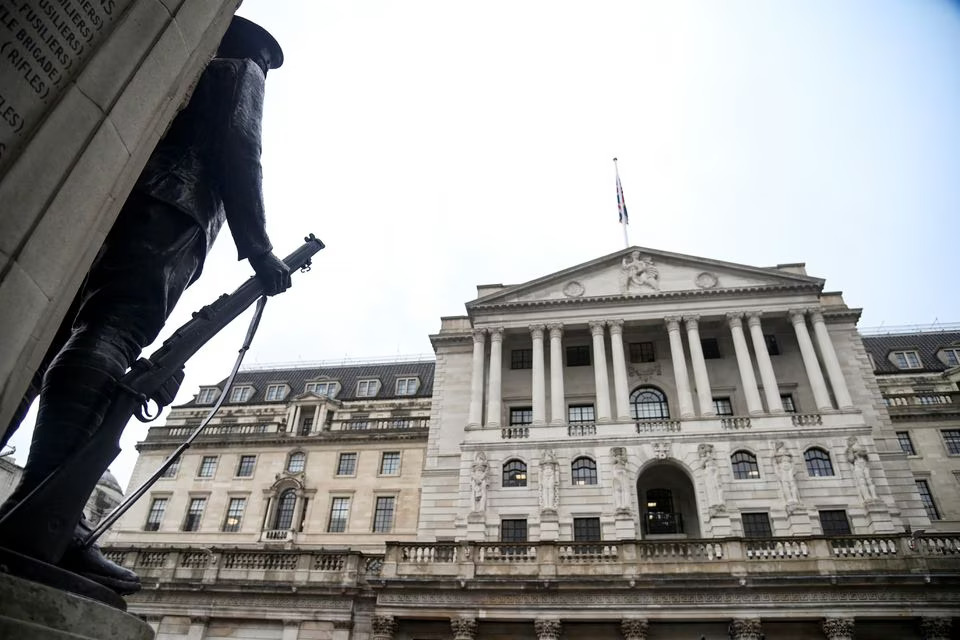Reuters – July 6, 2023
Investors bet on Thursday that stubborn inflation will force the Bank of England to raise interest rates to a 25-year high of 6.5% by December, pushing the yield on 10-year gilts to its most elevated since 2008.
Amid trading that some analysts called chaotic, rate futures showed a 55% chance that the BoE will have to raise rates from 5% now to 6.5% by the end of the year, with the odds rising to around 80% by March 2024.
Previously, financial markets had expected the peak to be 6.25%.
Longer maturities were hit just as hard as shorter-dated bonds which had borne the brunt of previous sell-offs. Thirty-year gilts recorded their biggest one-day price fall since the turmoil of last September’s “mini budget”.
The fall on Thursday was sharper than declines in government debt elsewhere in Europe and in the United States, which were hit by data showing U.S. private payrolls increased much more than expected in June.
The BoE said in June there had been “more persistence in the inflation process” as it raised interest rates by a bigger-than-expected half a percentage point, sustaining a round of selling of British government bonds which started in May.
“Investors’ expectations for future BoE hikes have only become more aggressive in recent days,” strategists at Deutsche Bank wrote in a note to clients.
Bailey said on Thursday that the central bank was focused on getting inflation “all the way down” to its 2% target – from almost 9% in May – and that it was too soon to discuss when rates might start to be cut.
“Getting inflation down is the most important thing that we have to do,” Bailey told the BBC.
Last week, he sounded sceptical about market expectations of cuts to borrowing costs starting as soon as May next year.
A Reuters poll of economists published on June 26 showed a median forecast of rates peaking at 5.5%.
Two former BoE officials on Wednesday added their voices to a chorus of criticism of the central bank, saying it had been too slow to spot the signs of inflation’s post-pandemic surge.
‘CHAOTIC SURGE’
Evercore ISI economists Krishna Guha and Marco Casiraghi described the latest move in gilt yields and interest rate expectations as “a chaotic surge” and any move by the BoE to 6.5% “would be quickly reversed”.
Nonetheless, they had concerns about the BoE’s strategy to combat an inflation rate running much higher than in the United States or euro zone, saying Bailey on Thursday “did not deliver the clear message and strategy we think is required to put some guard rails around rates”.
A BoE survey on Thursday gave mixed messages on inflation stickiness. Businesses’ plans to raise prices were the lowest in 15 months at 5.3%, but their expectations for consumer price inflation in the medium term rose to a five-month high of 3.7%.
The impact of higher interest rates on some parts of the economy is clear, with a survey recording the biggest fall in house building since 2009, bar two months in 2020.
Despite the weaker outlook, gilt yields rose strongly.
Ten-year yields climbed as much as 20 basis points (bps) on the day to 4.703%, pushing past last October’s peak to their highest since 2008. Five-year yields jumped 17 bps to 4.960%, also the highest since 2008.
Two-year gilt yields , the most sensitive to rate expectations, rose 18 bps too to 5.560%, another 15-year high, while 30-year yields were 16 bps higher at 1544 GMT, on track for their biggest daily rise since Oct. 14.
Imogen Bachra, head of rates strategy at NatWest Markets, said 10-year gilts now looked cheaper than what she judged as fair value of 4.6%. But she said the selloff could have further to run and she would not bet against it until yields hit 4.9%.
“Gilts are a falling knife that no one wants to catch,” Bachra said.
Reporting by David Milliken, Editing by Andy Bruce, David Holmes and Hugh Lawson

